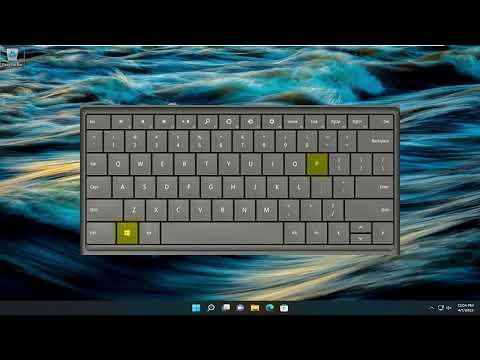I recently faced a situation that led me to search for a solution to a problem I didn’t even realize I had until it became too frustrating to ignore. I was working from home more frequently, and my setup consisted of a laptop and an external monitor. Initially, I was thrilled to have this dual-display setup because it made multitasking so much easier. However, as time went on, I found myself growing increasingly annoyed with the fact that my laptop screen stayed on while I was using the external monitor. The constant glow of the laptop screen was distracting and seemed unnecessary since I wasn’t using it.
This issue became more pronounced during long working hours. The laptop screen’s brightness was competing with the monitor’s, causing eye strain and reducing my overall productivity. I tried a few makeshift solutions, like adjusting the screen brightness and even covering the laptop screen with a piece of dark cloth, but these were far from ideal. The need to find a proper solution became more urgent, so I started researching how to turn off the laptop screen while keeping the external monitor active.
To tackle this, I first needed to understand why the laptop screen remained on and what controls were available to manage it. I discovered that most operating systems, including Windows and macOS, have built-in settings that can help manage screen behavior when an external monitor is connected. For my case, which was using Windows 10, the process involved a few straightforward steps.
First, I navigated to the ‘Power Options’ in the Control Panel. To access this, I right-clicked the battery icon in the system tray and selected ‘Power Options.’ Once in the Power Options menu, I clicked on ‘Choose what closing the lid does’ from the left sidebar. This led me to a screen where I could adjust the settings for when the laptop lid was closed.
Since my goal was to turn off the laptop screen while keeping the external monitor active, I needed to change the setting for ‘When I close the lid’ to ‘Do nothing’ for both ‘On battery’ and ‘Plugged in’ modes. This meant that whenever I closed the laptop lid, the laptop itself wouldn’t enter sleep mode, and importantly, the laptop screen would turn off while the external monitor continued to display the content. I then saved the changes, which effectively allowed me to close the laptop while keeping the external monitor as my primary display.
Another method I found useful involved the use of display management tools. For instance, software like ‘DisplayFusion’ or ‘MultiMonitorTool’ can help manage multiple screens with greater control. These tools often provide features to turn off the laptop screen without affecting the external monitor. DisplayFusion, for example, has a feature that lets you turn off specific monitors or adjust the settings more granularly, which could be useful if you have multiple displays.
While these methods worked well for me, I also explored more technical solutions, especially if the above options didn’t suit everyone’s needs. For those who use macOS, there’s a similar approach. By going to ‘System Preferences’ and selecting ‘Displays,’ you can use the ‘Arrangement’ tab to manage which display is primary and adjust the settings so the laptop screen is not actively used. Additionally, tools like ‘SwitchResX’ can provide more advanced controls for managing display behavior on macOS.
Ultimately, finding the right solution depended on a mix of built-in system settings and third-party tools. The key takeaway for me was that while the default settings on most operating systems do not explicitly include an option to turn off the laptop screen while using an external monitor, there are workarounds that can effectively solve this issue.
The frustration of dealing with an unnecessary glowing screen was alleviated once I adjusted the power settings and explored additional software options. By turning off the laptop screen and focusing solely on the external monitor, I found my work environment became more comfortable and less straining on the eyes. This not only enhanced my productivity but also made the overall working experience much more enjoyable.
